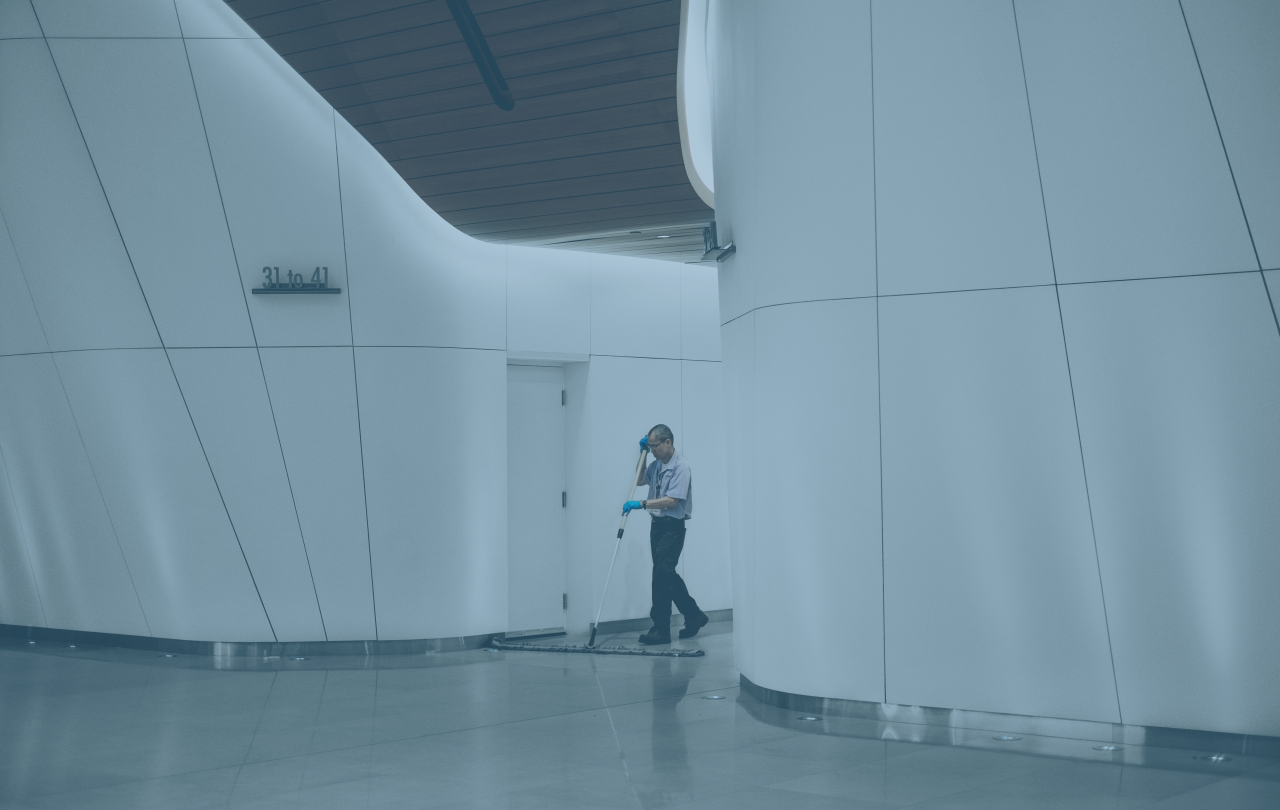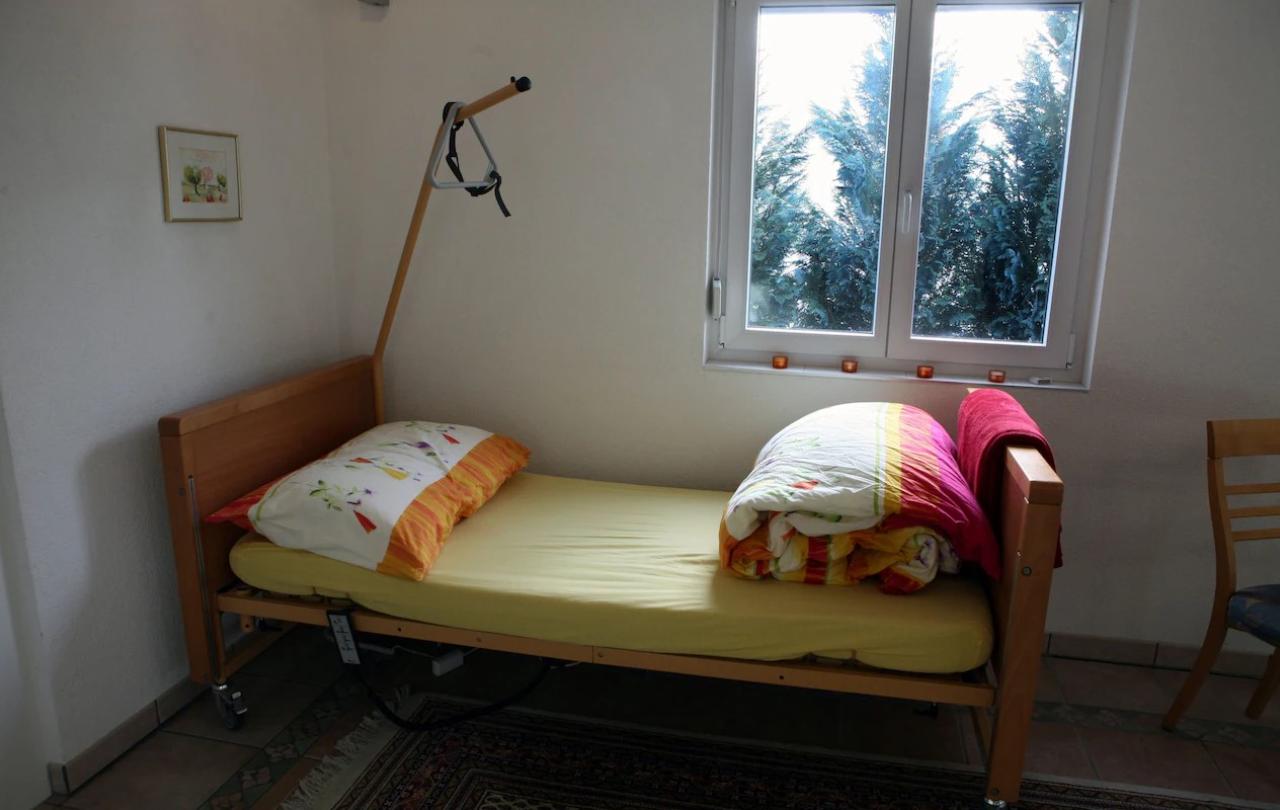
In offices across the country cleaners are often kept out of sight whilst the other workers do their jobs. Cleaners are instead brought in for two short shifts, the first starting as early as 1, 2 or 3 am, and a second beginning around 8pm. Most of us overlook this pattern of work, taking for granted that it is necessary.
However, dig a little deeper, and its insidious nature emerges. We begin to see how it is mostly unnecessary and harms the flourishing of cleaners in their health, family, and dignity. It treats small financial gains as worth more than human lives.
For many industries, cleaning does not need to happen in the early mornings and late nights. Consider the downsides of daytime cleaning. The cleaner would need to manoeuvre around colleagues at their desks and in meeting rooms, but they would still clean to a high standard in a similar timeframe. Their job does not need to be done during unsociable hours. There is a minor cost to the company in the office. The office worker might need to briefly step away from their desk for a moment as it is cleaned, they may be momentarily distracted by the sound of a hoover, and a meeting room may be out of action for a very short time. The only costs would be a tiny loss in efficiency and profits to the companies who hire these cleaners. Since the negative consequences of daytime cleaning, instead of split shifts at unsociable hours, are so marginal, the current working patterns are clearly unnecessary.
No choice, compelled to say yes
Importantly, these cleaners often do not have any other choice. I meet many of these cleaners in my work at the Joseph Centre for Dignified Work. None of them choose to work split shifts at unsociable hours. For many, employment with better conditions is simply not available. About 27 per cent are migrants and often they lack English-speaking skills, preventing them from getting other kinds of jobs. 59 per cent have attained an education below the equivalent of C or 4 at GCSE, so it is hard for them to find other work. 17 per cent are ethnic minorities, who face greater barriers accessing other kinds of work. They have to work, they often have no better choices than cleaning, and in this industry they cannot say no to these working patterns. In this way, they are compelled to say yes to these kinds of split shifts.
Split shifts deadly consequences
This working pattern damages health. A recent medical study demonstrates that working night shifts, a similar pattern to split shifts, more than doubles the odds of developing breast cancer Another study shows that shift-work disturbs worker’s circadian rhythms. This in turn leads to problems with cancer, heart health, mental health, and more. Split shifts have deadly consequences for cleaner’s health.
Eroding family time
Split shifts also steal cleaner’s time from their families. When cleaners earn below the real living wage, their family relationships suffer; 48 per cent say that their wage level has negatively affected their relationship with their children. For many, poverty wages force cleaners to take on two or more jobs. As Angus Ritchie, an Anglican priest, academic, and campaigner for marginalised communities puts it, poverty wages force workers to:
‘to choose between spending enough time with their children and having enough money to provide for them.’
These cleaners, who are often on poverty wages too, may only be able to briefly see their children between the end of school and the beginning of the nightshift, but will miss out on caring for them in the morning and enjoying extended periods of quality time. Therefore, when employers unnecessarily force these working hours upon cleaners, it also harms their relationships with their families.
Denying dignity
These patterns of work also render cleaners invisible. In an Equality and Human Rights Commission report from 2014, cleaners spoke about how they were made to feel ‘invisible’ and like the ‘lowest of the low.’ It is hardly surprising that they have this experience when the patterns of work we force upon them are designed to literally stop office workers from seeing them. Cleaners do crucial work which enables the broader enterprise of offices all around the country to function, yet they remain hidden away, their existence and contribution unseen and unacknowledged. Needless to say, these unnecessary split shifts take away their dignity.
Why value humanity
Campaigning to oppose this practice are Christians. Here’s why. The Bible and its tradition teaches that all human beings share the same inextinguishable value. As part of the story of creation says,
“God created humankind in his image, in the image of God he created them.”
Over the centuries Christians have interpreted this passage as affirming the same fundamental value of every person as one made in the image of God. Every person in some way dimly mirrors God’s inestimable goodness and love, and is, therefore, of greater value than all the riches of the world. To treat someone as less valuable than us or material goods is to deny the reality of how God created the world.
Split shifts at unsociable hours, however, represents the opposite belief. As argued above, these patterns of working are largely unnecessary, and only lead to small financial gains for the companies who hire the cleaners through tiny increases in efficiency. However, these small riches are treated as worth more than the flourishing of lives which are of inestimable value because they are made in the image of God. Fractional gains in money are placed above their ongoing health, their family relationships, and their dignity through recognition. These meagre financial rewards are more treasured than the flourishing of lives made in the image of God.
The working patterns are bad for cleaners. Not just because they damage health, but more fundamentally, because they deny the reality of God’s desire for creation. Enforcing split-shifts in pursuit of financial gain values small amounts of money above the flourishing of human beings, the infinitely valuable image of God, in their health, family, and dignity.
Christians are beginning to oppose this practice. For example, in 2017, three Christian organisations (Centre for Theology and Community, Church Mission Society, and the church, St Andrew by the Wardrobe) launched Clean for Good. This ethical cleaning company treats cleaners fairly; they pay the Real Living Wage and give holiday leave, sick pay, training and guaranteed working hours. Crucially, they also don’t force cleaners into working anti-social hours. They offer cleaners working conditions and hours which enable them to flourish in their health, family, and dignity, because they truly believe that these workers are infinitely valuable, being made in the image of God.





